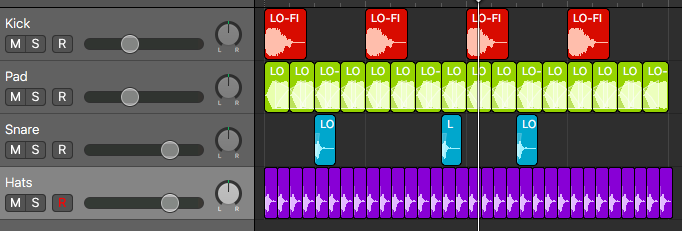Blog
How to come up with fresh ideas for your music
28 Jul '2019
Practise makes perfect. And, honestly, making music is no different. Spend more hours working and you will get better.

However, there’s always a danger that you’ll get stuck in a rut. It’s easy to get caught in a cycle of doing the same things over and over again. You want to challenge yourself and create something truly unique. And sometimes you need to cut through the noise to awaken that hungry artist. Don’t worry - we’ve been there. Try these easy techniques. That creative fire will be rekindled in no time.
Try a new instrument
Becoming proficient in a new instrument can take years. And to master it? Well, that can take a lifetime. But those first few minutes - or hours - with a new instrument can encourage a huge wash of creativity. You may be struggling to make your instrument work, but the sounds that come as a result will be unique and fresh. Essentially, they would never have been made if you were making music in the usual way.
Whether it’s a MIDI input or plugin, note what you get from it as you learn. We recommend exploring workstation instruments and factory library soundbanks. This will help you get some inspiration from how the instrument handles.

Generate notes with audio-to-MIDI
Most major DAWs allow you to convert an existing sound into MIDI based on what the background algorithms interpret. And, consequently, you can do some really interesting things with audio-to-MIDI. First thing to note is that the audio that you put in doesn’t need to have great quality. In fact, a quick tune whistled into your computer’s in-built microphone will translate into a worthy MIDI melody.
"Audio-to-MIDI has the ability to get things wrong."
But for all its merits, audio-to-MIDI can also get things wrong. For example, if you’re importing a vocal or recording some beatboxing to turn into MIDI, the result might not be exactly what you were expecting. But that doesn’t have to be a bad thing. Go with the flow and see what comes out of it.
Switch to a new DAW
You don’t necessarily have to learn a new instrument to break the ‘block’. Sometimes it’s as easy as trying a new tool.
Different DAWs do things - well - differently. So it’s likely that as you scrabble around looking for ways to mess with your audio, you’ll stumble upon something fresh and inspiring.
Use MIDI plugins
They might technically be classed as instruments in the VST, but MIDI plugins don’t make sounds themselves. However, they do allow you to play with MIDI note data in unusual and creative ways.
We’ve got an entire guide to loading and using MIDI plugins creatively. But, in summary, there are many inspiring sequencers, arpeggiators and scale devices that you can chain together. Doing this can help you come up with musical material that you’d never usually stumble across.
Craft everything from one sample
Honestly, the amount of sounds you can wring out of one sample is staggering. It’s all about understanding what tools are at your disposal. After you’ve isolated different parts of a sound, e.g. tonal vs noise elements, try and apply some processes. Along with time stretching and granular processing, there’s loads more you can do.

Try pitch shifters, delays and reverbs to get more tone out of single samples. The results will go as far as your imagination - and sound manipulation skills - can carry you.
Build your beats last
There seems to be an unwritten rule in music production that you create your drum sounds and beats first. Not everyone does it, but it’s definitely common. This is because those beats are vital when defining the groove, pacing and feel of your tune. Whatever you’re doing, it’s likely that you start programming drums - or using breaks - early in the process.
"You might end up making different sonic decisions, leading to completely new ideas"
But what if you tried something else?
Instead of building in hits and loops, leave them out intentionally. Concentrate on the musical, melodic, chordal and incidental elements of a track. Without having beats as the foundation, you might make entirely different sonic decisions. Crucially, these can lead to new ideas that you wouldn’t have got away with before.

This can be a tough decision to make when it’s time to add your beats into the mix. Fitting the drums into a track that’s mostly made is difficult. However, it will definitely create new solutions that you wouldn’t have thought of before.

